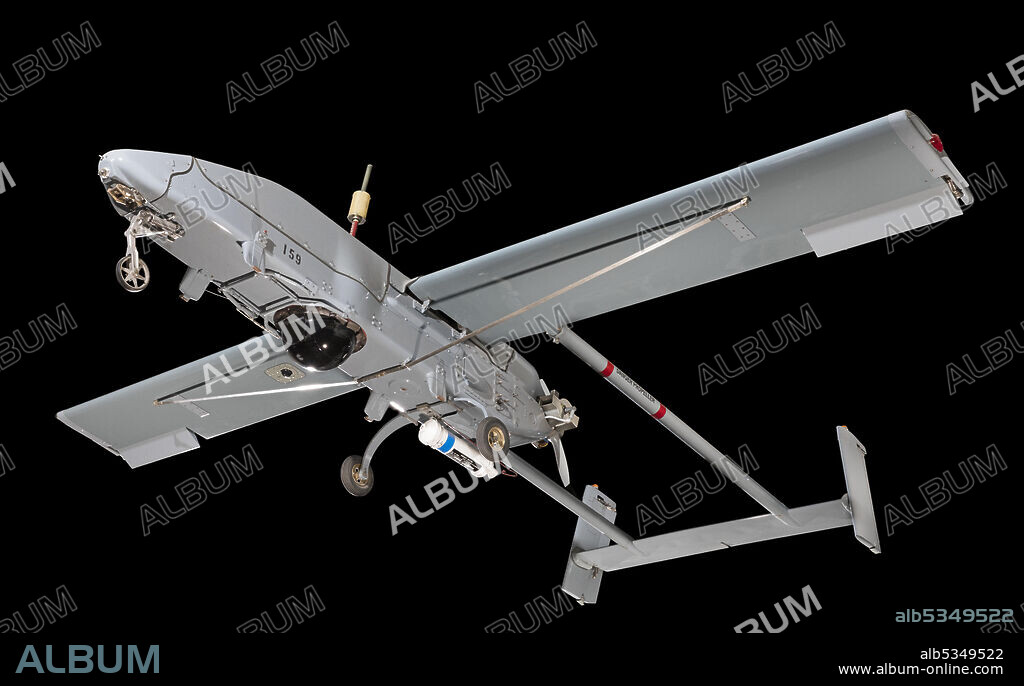alb5349522
PIONEER UAV INC.. Pioneer RQ-2A UAV,1985. Creator: Pioneer UAV Inc..

|
Ajouter à une autre Lightbox |
|
Ajouter à une autre Lightbox |



Avez-vous déjà un compte? S'identifier
Vous n'avez pas de compte ? S'inscrire
Acheter cette image

Auteur:
Titre:
Pioneer RQ-2A UAV,1985. Creator: Pioneer UAV Inc..
Légende:
Voir la traduction automatique
Unmanned Aerial Vehicle; Single engine; Pusher propeller; Twin tailbooms and rudders; Fixed tricycle undercarriage; Sensor package; Rocket assisted takeoff bottle included; Wings, tailbooms, tail assembly, and antenna breakdown for storage; Air Vehicle No. 159. The RQ-2A provides field commanders with real-time reconnaissance, surveillance, target acquisition, and battle damage information. Ground controllers pilot the aircraft over its 185-kilometer (115-mile) range. The RQ-2A can be recovered by flying into a large net aboard a ship or by using a tail hook and arresting wire on land. Its small size and composite materials make the RQ-2A difficult to detect visually and on radar. U.S. Army, Navy, and Marine units began using RQ-2As in the late 1980s. This one operated from the battleship Wisconsin during the 1991 Gulf War. While it was assessing damage from naval gunfire to targets on Faylaka Island near Kuwait City, several Iraqi soldiers signaled their intention to surrender to the aircraft during a low pass-the first time enemy soldiers had ever surrendered to an unmanned aerial vehicle. They were later captured by U.S. ground troops.
Personnalités:
Crédit:
Album / Heritage Art/Heritage Images
Autorisations:
Modèle: Non - Propriété: Non
Questions sur les droits?
Questions sur les droits?
Taille de l'image:
8657 x 5354 px | 132.6 MB
Taille d'impression:
73.3 x 45.3 cm | 28.9 x 17.8 in (300 dpi)
Mots clés:
 Pinterest
Pinterest Twitter
Twitter Facebook
Facebook Copier le lien
Copier le lien Email
Email
